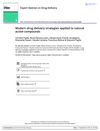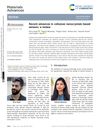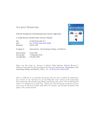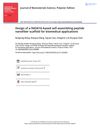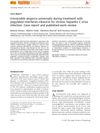Alopecia in Laboratory Animals Induced by a Polyampholyte, Polyethylene Alanine
September 1980
in “
Experientia
”
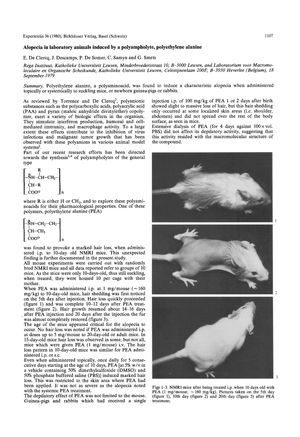
TLDR Polyethylene alanine caused hair loss in young lab animals but not in adults, with hair regrowth occurring within 20 days.
In the 1980 study, researchers found that polyethylene alanine (PEA), a polyaminoacid, induced alopecia in laboratory animals. When administered intraperitoneally (i.p.) at a dose of approximately 160 mg/kg to 10-day-old NMRI mice, hair loss was observed starting on the fifth day after injection, with complete hair loss occurring 10-12 days post-treatment. Hair regrowth began around 14-16 days after injection, and by 20 days, the fur was nearly fully restored. The age of the mice was critical for the alopecia to occur, as no hair loss was noted in 20-day-old or adult mice, even at higher doses. PEA also induced hair loss when applied topically at a 5% concentration in a dimethylsulfoxide (DMSO) and phosphate buffered saline (PBS) vehicle. Additionally, guinea pigs and rabbits showed localized hair loss when injected with PEA shortly after birth. The study involved groups of 10 mice, and the depilatory effect of PEA was not due to toxicity, as it did not affect the growth rate or white blood cell counts of the animals. Histopathological examination revealed an infiltration of mononuclear cells in the dermis, suggesting an inflammatory response. The study concluded that PEA's interference with hair growth may be similar to anagen effluvium, a condition characterized by rapid hair loss, and that further research is needed to understand how PEA induces alopecia and its potential applications.
